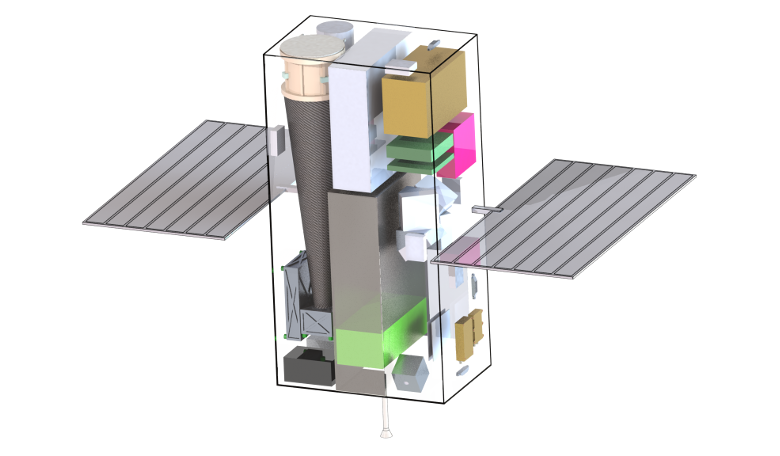Earlier this year, a team of NASA engineers demonstrated a technological first – a fully autonomous X-ray navigation system that could revolutionise how robotic spacecraft are piloted to the far reaches of the solar system and beyond. Before that though, scientists want to use the technology on a CubeSat mission to characterise the composition of the Moon.
The experiment, which is called the Station Explorer for X-ray Timing and Navigation Technology, or SEXTANT, for short, works in a similar principle to how GPS works for people on Earth, but instead it uses X-rays from millisecond pulsars to accurately determine the location of an object moving at thousands of kilometres per hour in space.
Pulsars are rapidly rotating neutron stars that emit a beam of electromagnetic radiation at regular intervals or pulses and in the case of millisecond pulsars, their pulse periods are in the range from one to ten milliseconds! To put this into context, the first discovered millisecond pulsar was recorded as having a pulse period of 1.6 milliseconds. This means that the neutron star rotates at an astonishing 640 times each second.
These pulsations are highly predictable, and can be compared to the atomic clocks used to provide timing data on the terrestrial GPS system. However, unlike the ubiquitous GPS system that is accurate to within a few feet for Earth-bound users, SEXTANT only needs to reach accuracies in the hundreds of feet because distances between objects in space are separated by millions of miles.
SEXTANT’s first foray into hunting down a target succeeded, as the experiments primary objective was to locate NASA’s Neutron-star Interior Composition Explorer, or NICER telescope within a 10-mile radius – a feat it achieved with relative ease. That might not seem like an arduous task, but it was speeding above the Earth at slightly more than 28,164 kilometre per hour (17,500 miles per hour), while attached to the International Space Station.
Now that NASA has shown that an autonomous X-ray navigation in space is viable, a team led by the Smithsonian Astrophysical Observatory (SAO) plans to put the technology, commonly known as XNAV, to practical use by using it on a proposed CubeSat mission to the Moon.
Called CubeX, the SAO team not only want to show that XNAV can work operationally on a satellite but they also want to characterise the lunar surface by measuring the composition of the Moon’s lower crust and upper mantle to understand the Moon’s origin and evolution.
“There’s a lot we don’t know about the Moon. Many mysteries remain,” said CubeX collaborator JaeSub Hong, a researcher with Harvard University.
To determine how the Moon formed, CubeX would use a technique called X-ray fluorescence, or XRF to capture “fluorescing” photons with a tiny X-ray optic and an onboard spectrometer. XRF works by detecting X-rays emitted from individual atoms in sediment, rocks, and other materials that have been emitted due to excitement by an external source — in this case, X-rays emanating from the Sun.
Scientists can then identify which elements make up outcrops of the Moon’s rocky mantle and its crust which have been exposed by impact craters striking the surface.
The team will have to wait a few years to exploit the next solar maximum – a period that would ensure a steady bombardment of high-energy X-rays to produce the fluorescence – but the utilisation of XNAV could help propel the technology to maturity. “This is a push to move the technology into the operational mode,” said SEXTANT Project Manager Jason Mitchell. “This is great opportunity for XNAV and showing its value to navigating in deep space.”
In the meantime, the SEXTANT team are busy fine-tuning both flight and ground software in preparation for a second experiment later this year with an ultimate aim to use XNAV to support human spaceflight and “enhance deep-space exploration anywhere within the solar system and beyond,” said Mitchell.











